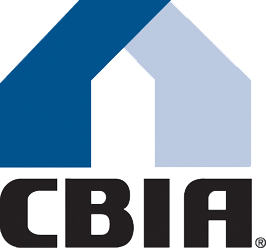Photo by Vivint Solar on Unsplash
by Jim Perry, Taylor Morrison,
President, Building Industry Association (BIA) Baldy View Chapter
Spring started with good news for home buyers and sellers when the Bankrate.com National Survey of Mortgage Lenders reported that mortgage rates were falling for 30-Year Fixed-Rate mortgages (FMR) and reported “signs point to more downward action”. The website reported that the 10-year Treasury Note “slipped to 1.080 percent, creating yet another historic low for yields. The 10-year Treasury and mortgage rates typically move in the same direction, so where the 10-year goes, mortgage rates usually aren’t far behind”.
Spring also brings good news for those fortunate enough to have already attained the American Dream of homeownership because this season presents the best opportunity for homeowners to start saving money and energy and increase their quality of life with a home energy audit. Home energy audits are a fast, relatively simple way to assess how much energy your home may be using unnecessarily and determine what you can do to make your home more energy efficient.
While today’s new homes are the most energy-efficient and environmentally-friendly homes ever built, older homes can be comparatively economical and comfortable using state-of-the-art new appliances and modern remodeling materials, techniques and technologies. Time and wear can generate unwanted expenses for homeowners, so take advantage of the upcoming longer days and warmer weather and trim any expenses that might occur before they occur.
The largest consumer of energy in a home is the HVAC or Heating, Ventilation and Air Conditioning system. As much as half of the energy used in a home goes to heating and cooling. So, the most important first step of your energy audit will be to visit the Environmental Protection Agency’s (EPA) www.energystar.gov website. Check out all the good advice it offers on conserving energy and saving costs and make sure to download their easy-to-follow A Guide to Energy Efficient Heating & Cooling as a .pdf file.
Then inspect any place in the home that allows air in or out of the home for potential energy loss. The most common areas for lost energy are windows and doors - but a thorough inspection of the home’s interior will include baseboards, wall and ceiling junctures, electrical outlets, switch plates and fireplace dampers. Remember, if the item being inspected is loose or if you can see daylight around the inspected area, you likely are losing energy – so they need to be re-sealed.
Because older homes may have insufficient insulation in the ceiling and walls, checking the attic will show how well your home is insulated. Look for a vapor barrier (tarpaper or a plastic sheet) under the attic insulation. If your home lacks a vapor barrier, consider replacing the insulation completely or painting interior ceilings with vapor barrier paint. A quality vapor barrier, whether painted or as part of your insulation, will reduce the amount of moisture that can pass through the ceiling, further increasing the insulation’s effectiveness.
During your inspection, pay close attention to openings around pipes, ductwork and chimneys. If you notice gaps, fill them in or reseal them. If you can see your floor joists, you likely need more insulation but if you can’t see them, you may have enough.
While converting all of a home’s lighting to LED will produce the best energy efficiency results, a more economical option is to simply replace any lights that are used more than two hours each day such as porch lights to a compact fluorescent lightbulb (CFL). A CFL will typically save up to 75 percent of the energy used by a standard incandescent bulb.
Today there are many simple and economical ways owners of older homes can increase their comfort, defray their energy costs and reduce their environmental ‘footprint’ without investing a great deal of money. According to the California Energy Commission, today’s state-of-the-art new homes typically use nearly percent less energy than homes built fifteen years ago. However, by performing a home audit and implementing a few key changes, your 20-year-old home can produce energy savings nearly comparable to homes being constructed today.
The BIA Baldy View Chapter seeks to advance the opportunity to attain the American Dream of home ownership. For additional information on home buying or the benefits of homeownership, go to www.biabuild.com on the web.
*****

















